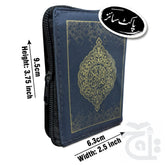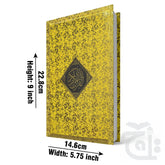







Tarikh Makkah, which translates to the History of Mecca, encapsulates a profound narrative that spans millennia and holds immense significance in the hearts of Muslims worldwide. Situated in the barren valleys of the Arabian Peninsula, Mecca is revered as the holiest city in Islam and serves as the focal point of the annual Hajj pilgrimage, drawing millions of devout pilgrims from diverse corners of the globe. The history of Mecca predates the advent of Islam, with its origins steeped in antiquity and shrouded in myth and legend. According to Islamic tradition, Mecca was established by the Prophet Ibrahim (Abraham) and his son Ismail (Ishmael), symbol of monotheistic worship. Mecca significance as a spiritual sanctuary and commercial hub flourished over the centuries, attracting pilgrims and traders from far-flung regions of the Arabian Peninsula and beyond. The annual pilgrimage to the Kaaba, known as the Hajj, became a cornerstone of pre-Islamic Arabian religious practices, imbuing Mecca with an aura of sanctity and reverence. However, it was with the advent of Islam and the prophetic mission of Muhammad in the early 7th century CE that Mecca historical trajectory took a momentous turn. The proclamation of monotheism and the call to abandon idolatry challenged the entrenched pagan practices of the Quraysh, the dominant tribe of Mecca, leading to fierce opposition and persecution against the Prophet and his followers. The Hijra, or migration, to Medina in 622 CE marked a pivotal moment in Mecca history, as it signaled the emergence of Islam as a distinct socio-religious movement and laid the groundwork for the establishment of the first Islamic state. However, Mecca remained the ultimate spiritual destination for Muslims, and the eventual conquest of the city by the Muslim forces in 630 CE marked a triumphant return for the Prophet Muhammad and the vindication of his mission. Since then, Mecca has remained at the epicenter of the Islamic world, serving as a beacon of monotheism and pilgrimage. The Kaaba, encased in a black cloth adorned with gold calligraphy, stands as the focal point of Muslim worship, symbolizing the unity of the Muslim ummah (community) and the submission to the will of Allah. Today, Mecca stands as a bustling metropolis, juxtaposing ancient traditions with modernity, yet retaining its timeless allure and sanctity. The annual pilgrimage to Mecca remains the pinnacle of spiritual fulfillment for Muslims, embodying the profound sense of unity, humility, and devotion that defines the Islamic faith. In essence, the history of Mecca is a testament to the enduring power of faith and the transformative impact of divine revelation, shaping the destinies of nations and inspiring generations to seek solace and salvation in the embrace of the Almighty.
- Choosing a selection results in a full page refresh.





















